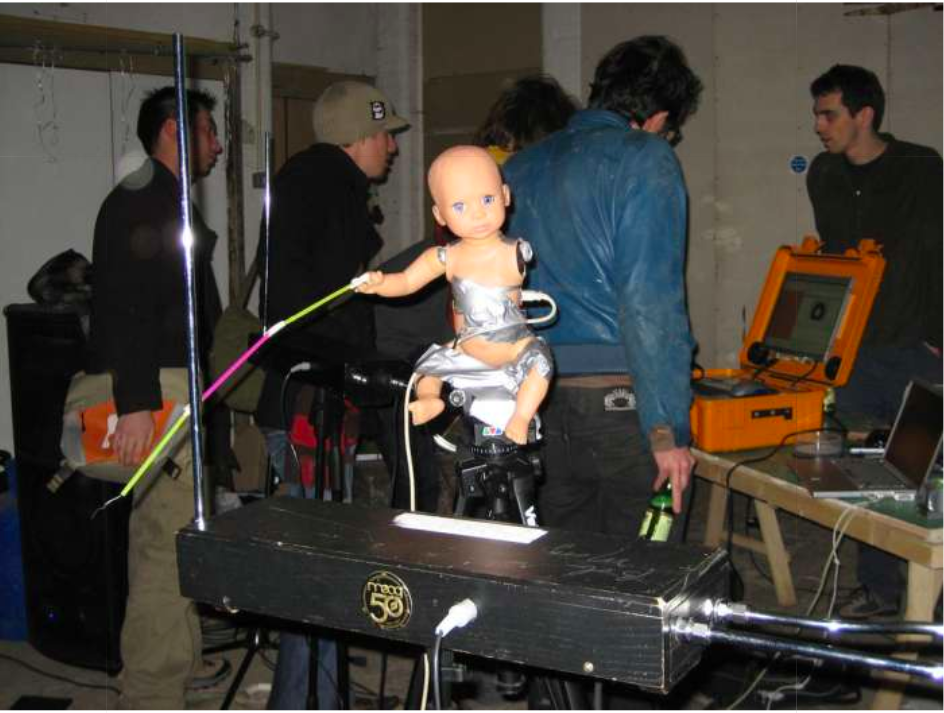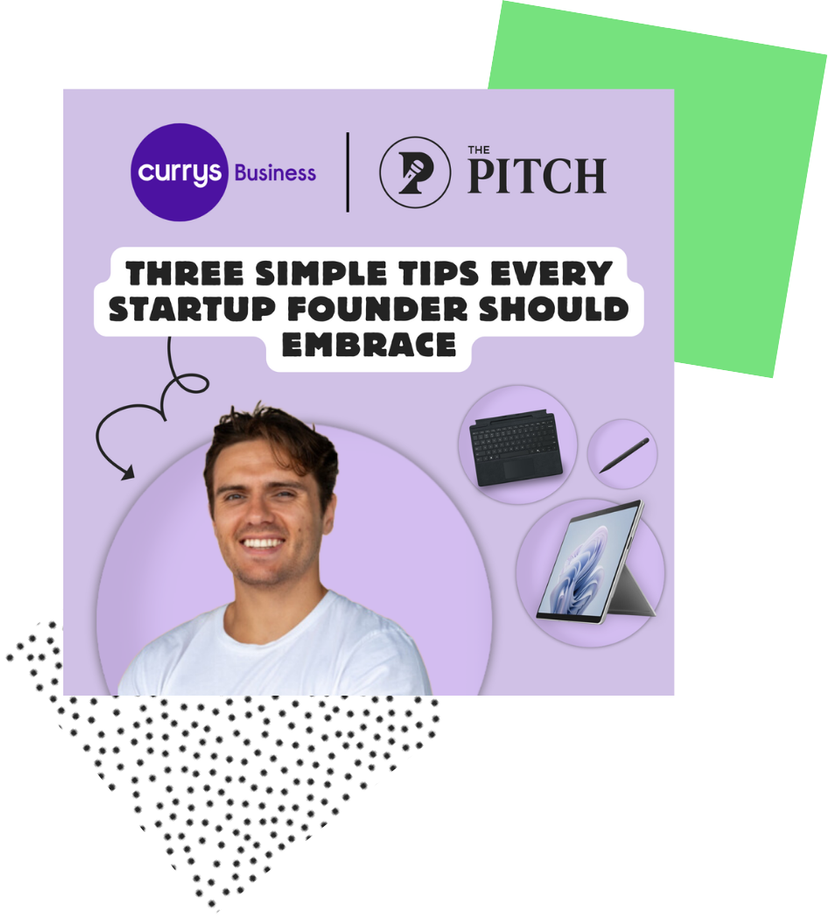It was in 2010 when David Cameron, his pre-Brexit innocence still firmly intact, announced a new dawn in the tech industry.
During a speech in heart of East London’s Tech City, as it had been christened, Cameron declared this area would now emerge as a willing challenger to Silicon Valley’s decades’ long preponderance.
The erstwhile Prime Minister’s oration was almost biblical: “Here’s our vision for East London Tech City,” he said, “a hub that stretches from Shoreditch and Old Street to the Olympic Park. This is what local businesses are saying they need. What part can you play in making it happen?”
How London’s tech scene started
It’s little wonder that Cameron would’ve made such a big deal of East London’s tech scene. In the wake of 2008’s financial crash, there were very few positives in the British economy for politicians to latch onto. The bustling industry of East London’s entrepreneurs was a welcome respite from the post-crash stagnation.
But still, Martin Stiksel, co-founder of Last.FM, found it weird to see the establishment embrace what had historically been a weird little corner of London. “Without our knowledge David Cameron used Last.FM in that speech,” says Stiksel, sitting in the office room of his London apartment. “We were kind of taken aback.”
Stiksel, a émigré from Austria, moved to East London in the 90s. Despite his long tenure in the UK, he still speaks English with the distinctive hardened consonants of a native German speaker.
“They just jumped on this bandwagon,” he continues. “It was desperate times, they needed some good news and it was the only sector in the country that was growing at the time. But the government never did diddly-squat.”
Last.FM came, not from government grants or incubators, but from the area’s innovative electronic music scene. It was a way for producers to share their music. It had developed organically, almost tunnelling its own way into existence.
The company’s rise is emblematic of how East London’s ‘Tech City’ really got going. Years before the headlines and back-patting, this neglected corner of London-cum-artists’ colony was transformed by an unthinking, almost accidental entrepreneurialism.
Here we speak to the people that made it was it is today and share their own take on why the area is so unique.
Meet the East London entrepreneurs behind it all
Martin: I moved to the area in about ‘98. It was already a very cool area. The main reason why it was happening was because there were flats available. There were also warehouses available that people who didn’t have much money could move to a very central location.
Already by the mid-90s, there was a lot of people in that area – artists, musicians, photographers. Wolfgang Tillmans lived just down the road. They took over the large spaces there.
There was this club there, the Blue Note, that had London’s first regular Drum and Bass night. There was a real hub, which was on Hoxton Square. You could go out on a Wednesday and see Aphex Twin play for a two-pound entry fee.
Toby Kress, head of Accelerator London and Shoreditch veteran: In a previous life, my very first job was in Shoreditch. In 2001. It was a paid internship at Vertigo Gallery on Great Eastern Street.
It was great. It was already full of bars and restaurants. There was a growing art scene. That was my world then. Galleries were moving from West London to East. There was loads happening around Hoxton Square with White Cube and big commercial galleries.
And then there were small alternative galleries popping up around here and in Vyner Street in Hackney. There was enough commercial interest in the East for galleries to open up here with cheaper rents and bigger spaces.
Karl Palmas, academic and former East London resident and startup employee: I was sucked into the Silicon Roundabout vortex having done an internship at the EU Commission during the spring and summer of 2000.
I moved into a flat at Brick Lane and walked into work every day at 40-42 Scrutton Street. Really enjoyed my nine months at the firm. Deep Group went bust in 2001, like many other firms that were a part of the bubble.
Surviving a “tanking” economy
Rob Fitzpatrick, founder of Habit Industries: We’d raised money from Y Combinator but we ended building advertising tech. The investors that really understood ad tech were in New York, London, Tel Aviv, and all of the customers who mattered to us had a strong presence in London but not necessarily in San Francisco. So we moved out here in 2008.
I arrived just as the economy was tanking. We’d just flown our whole team out here one way with the last of our money. The investors called me and said, “Today your company is worth half what it was yesterday.” They basically said they would never have invested if they met us after the crash, but they had never gone back on a handshake.
There was a clear vibe, you could almost touch the atmosphere
l
So there was this rush to get the deal done before things got worse. I ended up bribing a small internet cafe on Hoxton Street to stay open and when they kicked me out I ran through the snow in flip-flops to a friends office – it was that day of heavy snow – and we got the deal done.
We settled right on Silicon Roundabout, in Transworld House, we were subletting from Moo. There were a couple of other companies there too. That was the heart of the London community at the time. Last.FM was down the road, Songkick wasn’t far away.
Karl: There was a clear vibe, you could almost touch the atmosphere. It was darker and more gritty. It’s also because it was a place where you spent time. Subsequently, I worked there obviously, but most of the people that were there came at night for the clubs: 333 and the stuff around Hoxton Square and Brick Lane. Old Street roundabout was a nondescript traffic feature, not necessarily pleasant to be around.
I was living in a flat on Brick Lane. I wouldn’t say it was ‘dangerous’ – but it was definitely more scruffy. One Friday night, I had been out with my workmates. It was late Friday, early Saturday morning. There were a few locals emerging from a nearby street with baseball bats, yelling and chasing people down Brick Lane.
At that time, it was clear there was a tension between the old – the ethnic communities that had been there for a long time – and the banker contingent and also the IT crowd who started to hang around there.
Building a community on poker and pizza
Martin: There also weren’t many meetups back then. The first presentation we gave about Last.FM was at an event called Dorkbot in this dark and dingy place called State51, at the top end of Brick Lane. It was a weird mix of CD-ROMs, flash art, music.

Karl: This photo is from Dorkbot, a long time ago. If I remember it correctly, Clara the baby moves her arm, producing sound/music, a theremin-like contraption.
Martin: There was another event called Minibar, which was at the back-end of the Trumans Brewery. That was the early 2000s. There was something. All these Silicon Roundabout parties and job fairs came in the late 2000s.
The term ‘cyberpunk’ was still a trend then. There were some crossover and techno-trance music. It was interesting, terrible outfits everybody.
Rob: There was a VCs and startups poker game held in Transworld House. It was very fun, just one table. Maybe four VCs and five founders. We’d play and have pizza and have a good time. It wasn’t PR and showing off, it was just folks in the same city. I made some good friends and it was great, casual way to meet investors.
It was very different to the meetups now. It feels like this natural attrition of, as the community grows, there are more people around the community. The consultants, the service providers, the investors – they’re not bad. But as you go to an event and these people become a greater percentage of attendees, then founders can’t be so honest with each other anymore.
So I ended up doing version two of the poker game at Nvana. I tried to do a lot of no pitching events there. So the poker game was one, and you weren’t allowed to talk about your company. That grew to about 50 founders a week. We also did Startup Burger night at Bar Music Hall on Curtain Road, they had £5 burgers every Monday. So every Monday we’d meet there.
The only rules were no pitching and you had to be a founder. That recreated a lot of what it was like when I got to the area. The other events I went to, they’d be pitching, they’d be selling, trying to impress each other. For me, that’s low value in terms of learning and it’s just kind of annoying.
The switch to defensive pitching mode
Rob: Startups are defined by how badly they’re doing. If you were doing really well, you wouldn’t be a startup – you’d be a business. As a startup, what matters is not what’s succeeding but what’s not succeeding yet.
And so, if I’m speaking to someone in the community and they’re saying ‘yeah, we’re doing amazingly’, it makes you think ‘we’re fucked!’. You know, this client is suing me and this team member is quitting, and I don’t know what to do. So once it switched to that pitching mode, everyone becomes a little defensive and it becomes hard to learn.
And ironically, despite the fact that you’re around other people, it starts to feel really lonely because you can’t forge these deep connections with other startup founders who acknowledge that it’s really difficult.
Martin: We used to go drink coffee in Brick Lane. Nowadays everyone’s doing amazing barista juggling in East London, but these places were still unique then. I remember people sitting in the coffee shops with these very old laptops, the G3 Macbook, the big black one, they all had spreadsheets open speaking in hushed tones.
Despite the fact that you’re around other people, it starts to feel really lonely
I remember thinking ‘what are these guys talking about’. We picked up enough of the conversation to figure out that they were pitching some investors – I have no idea who the investors were then? Maybe some banks?
Karl: On the one hand, there was considerably less money then there’s now. Now, a lot of the spaces have been turned into coworking spaces or incubator spaces, built around the notion of matching capital with ideas.
But I think the irony is that also, even though you didn’t have that when you got involved, it was still amazing how easy it was to get money during those bubble years. There were fewer strings attached when you got money from a major funder.
Rob: After my business failed in 2010, I had very limited funds because I made the classic first-time founder mistake of putting all my personal savings into the startup. Through a clerical error with my previous landlord, he booked the apartment a month too soon, for a new tenant.
So I got home and someone else was in my house wondering why all my stuff was still there. It meant I was able to get my deposit and last month’s rent back no questions asked.
Setting up a coworking space in an abandoned warehouse
Rob: I went wandering through Shoreditch and I found this super shady warehouse on the corner of Great Eastern Street and Shoreditch High Street which was scheduled to be demolished. So they were looking for temporary tenants. It was in awful condition! It had these filthy carpets and this upside-down oven in the middle of the floor. I said: ‘I’ll take it – but you gotta move the oven.’
So I set up the coworking space there, called Nvana. The way I framed it was ‘it’s dirty, it’s grungy, there are homeless people we can’t get rid of living under the stairwell, the upstairs neighbour screams all day because he’s had way too many drugs – but it’s cheap and you’re going to be around other early-stage startups’.
The idea was that you could be there for the first three months of your company and then I’d kick you out. In practice, I didn’t hold to that – but it was just once you’ve matured, you’d get out of there anyway because it was gross. It was £50 per desk per week. That’s a half to a third of the going price elsewhere.
It’s dirty, it’s grungy, the upstairs neighbour screams all day because he’s had way too many drugs – but it’s cheap and you’re going to be around other early-stage startups
There were fewer investors but the quality was no lower. The big difference back then – and this was true in San Francisco, too – early-stage funding wasn’t what it is today until Y Combinator went and let the genie out the bottle.
We went through YC in 2007, they had only started in 2005 and still had no success. So people still thought they were a joke programme and early-stage companies didn’t deserve any support – but YC eventually did change that.
But, still, when I got to London it wasn’t that common. I remember seeing Passion Capital was doing cheque sizes of around a £100,000. And Saul and Robin Klein had an angel fund – there was certainly some angels around, but you couldn’t do a big tour of them.
The scramble to be the biggest, the quickest
Karl: We didn’t talk about lean startup strategies or agile approaches. It didn’t exist. We looked at things like burn rate. It was more about how we could spend as much money as possible. It was this scramble to become the biggest, the quickest.
There was talk about the new economy and how everything was based on natural monopoly situations. The focus was capturing a market as quickly as possible. There was a gold rush environment. So there wasn’t as much money around – but once you got it, you got almost too much I’d say for what you really had a use for.
It was more common to have these lavish company trips. It was part of the atmosphere then. I get the sense that it’s very different from the entrepreneurship we see today. Culturally, it was a very different time.
Then when the bubble burst in 2001 and there was a lull. And that’s where the emphasis on lean startups and design strategies emerged as a reply to this wasteful entrepreneurship.
How the term “Silicon Roundabout” emerged
The actual term “Silicon Roundabout” had a fairly innocuous start. Matt Biddulph, the erstwhile CTO of the since perished Dopplr, quipped on Twitter:
“Silicon Roundabout”: the ever-growing community of fun startups in London’s Old Street area
— Matt Biddulph (@mattb) July 23, 2008
Biddulph’s sobriquet took on a new life when he mentioned the joke to the Financial Times’s Tim Bradshaw at a party. After pitching his editors, Bradshaw let Biddulph know that he wanted the story of this ‘Silicon Roundabout’.
To help Bradshaw, Biddulph created a rather unscientific map of 15 tech companies that had developed around the Old Street roundabout.
Martin: The beginning of Silicon Roundabout feels very artificially created. The press loves to bundle stuff or make things part of a wider trend. We didn’t really see it like this. We called it the ‘Silly Roundabout’ when the phrase became a thing.
The roundabout still is one of the ugliest places in East London. They’ve been talking about making it nice ever since I can remember.
But the area as we think about it now developed in 2007-2009. There was this guy that developed this map in 2008. We were aware that there were some companies there. It got wrapped up with this map when we were suddenly aware of these other people.
But you noticed more and more that there was talk about tech. The mood changed. It ramped up between ‘06 and ‘09.
Karl: I stayed on in London, but moved into doing my PhD in Sociology at the LSE – I was doing economic sociology, in part influenced by my experience of the bubble.
So, in other words, I kept on being a part of the area (I have stayed in three or four flats nearby the roundabout), but probably became more of a researcher observer of the whole thing.
I increasingly started making the claim that the bubble had produced a cultural shift akin to our parents’ ‘68 revolution. Ours, though, was much more infused with technology and entrepreneurial ventures.
Changing perceptions and increased investor interest
Karl: We were all kind of selling this same story. We have this new tech that will change society and this new way of thinking about how we organise society. We were all selling that story because we were all benefitting from it. The more we said things were going to change the more clients we got.
There was a bump, people started laughing at some of the more outlandish claims. But there’s still a legacy there. On the one hand, more cultural: some ideas that were spread at the time. After the bubble burst, a lot of the tech were talking about went mainstream after the mid-2000s.
Toby: And then Cameron’s speech was the formal start of the Tech City branding umbrella. It’s a marketing thing, really isn’t it? There’s nothing bad about it, it was good for the neighbourhood. But it certainly wasn’t a catalyst, stuff was happening already.
It’s taking credit for something that was already happening – but it’s fine. It always happens
But it did have an impact, in terms of international perception. It certainly coincided with more investment coming to London from outside London. I think it was a natural boom coinciding with government spotlighting it.
Rob: It was kind of eye-rolly, but none of us was that surprised. It did feel like we had run a marathon and then in the final 100 metres someone runs up behind and starts pushing you, yelling ‘we’re winning! We’re winning!’. It’s taking credit for something that was already happening – but it’s fine. It always happens.
The aspirational nature of Shoreditch
Martin: With our next startup, we consciously moved away from the area, to Silicon Fields [based in London Fields in Hackney].
For us, it was about very openly being able to have conversations about unformed ideas without anyone pricking their ears. And up there was still sweatshops and fashion designers in 2011. There was more and more money moving into Old Street so it was very expensive.
It wasn’t claustrophobia per se – but you definitely couldn’t speak as freely as you could have in the past. We were used to shouting around and having arguments and then we realised it had changed. Particularly if you’re talking about half-baked ideas, it’s better to do that in a place where you don’t feel self-conscious.
Toby: When you’re getting started or bootstrapping, every penny counts. There are places in Shoreditch where a desk is £500 a month. It’s a substantial investment.
Shoreditch is a part of the story they’re projecting
People who pay it are paying to make themselves look like a bigger, more established company. They’re not necessarily paying for the desk, they’re paying for the appearance. They see that as a good investment and Shoreditch is a part of the story they’re projecting.
It’s the appearance of making it. If you’ve got a cool office in Shoreditch, that helps with selling your story to investors, to potential employees that you’re hiring.
The three big challenges for any startup is getting clients, getting investment and getting talent. So where you’re based is important for getting the right team and for getting investors on board. It’s doing what you should do: hustling, projecting that you’re bigger and better than you are. You know, fake it till you make it.
Rob: As an area, I love it. I lived there until six months ago. But I’d never start my company there now. I’m willing to pay rent for myself but I’d never pay rent for my own company.
I’d live in Shoreditch, yeah – but I’d base my company in Dalston. And then when my business matured and it made strategic sense, I’d say ‘okay, I’m gonna invest a million pounds a year extracting some benefit out of Shoreditch’.
Toby: It’s got some legs left in it yet. It’s still a very desirable place to be. It’s not the place to be – but it’s still an aspirational place where people want to be based.
Finding a peer-to-peer ecosystem for early-stage startups
Toby: Obviously, as prices go up, it’s not just going to be about finding cheap space now. That’s been replaced by the network and the community.
I don’t want it to sound like it’s just about appearances. Having a more established ecosystem is valuable in itself. Being around people doing great things, whether it’s in a building like ours or just meeting people in the pub, it has value.
People’s decisions for coming [to Shoreditch] have changed. It’s less about cheap rents now and, instead, it’s about being a part of the vibrant community and being at the heart of what’s happening. And obviously, as more places build their own ecosystems, people will have more choices about where to go.
Rob: Shoreditch was such an incredible environment. One of the reasons why San Francisco is so strong is because there’s a tremendous amount of peer support. And peer support is different from expert or investor support because you can be totally honest with your peers.
You don’t have to pretend to have all the answers and when you’re speaking to an investor, no matter how knowledgeable they are, it’s hard to get help because you’re trying to impress them.
In Shoreditch, there were enough people trying to figure it out that you had that peer support. There’s a similar thing happening in Bristol right now with bootstrapping. It’s this exciting place where new stuff is being figured out and it feels really supportive. And when you make a mistake you’re almost excited to share it with the community.
But we always knew Shoreditch would eventually get expensive. There are benefits and downsides to that.
The big benefit is that you can now come from outside London and there’s a physical place where you can experience startups. That’s really cool for people who used to dream of taking a trip to Silicon Valley. It’s now a place you can go to experience startups.




